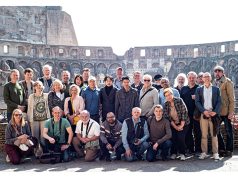
The role that digital imaging plays in the law enforcement community continues to grow and companies like Foray Technologies are ensuring that role is a starry one.
Foray Technologies is a software development company that specializes in developing applications used by law enforcement agencies. “The software is geared for the capture and management of digital assets, which could be photographs, audio or video files, the contents of a cell phone or PDA, or a computer desk drive that’s been seized as the result of a homicide investigation, drug or gang activity, etc.,” explains David Witzke, Vice President, Program Management, Foray Technologies.
Foray Technologies’ software not only provides agencies with the capability to capture and download images and/or assets but also the ability to authenticate them, and to follow and maintain a chain of custody of items that tracks who has had access to them, who printed them, and so on. “To be in compliance with legal requirements,” states Witzke, “we not only have to maintain the chain of custody, but also the history of that item, which includes how we (may have) enhanced an image from a non-identifiable image to one that can be identified. There are certain types of images such as fingerprints that may not be identifiable because of the background of the surface it’s on. We’ve developed software (that included integrating Adobe Photoshop into its applications) that helps remove those backgrounds so a fingerprint, etc., that is non-identifiable can be visualized.”
For example, Foray’s software allows users to acquire images in a batch download process where, say, a detective that’s returned from a crime scene with a digital camera can download images from the camera and “check them in” so they aren’t dispersed and/or lost. “Using our software with the digital acquire function, (users) can download the batch, and then sort them based on a case number, a crime category, or even an evidence category,” notes Witzke. “Images can also be sorted and classified as to what type of item it is, such as a finger or palm print.”
These days, most evidence photos are captured with digital photography, which then begs the questions, “What was done to alter or manipulate that image?” “Could someone have taken the flashcard out of the camera and enhanced it?” “How do you track who’s had access to it, etc.?”
“Our technology provides the ability to lock those possibilities out so you know exactly when it was taken, by whom, where, and how,” explains Witzke. “There’s also the issue of code of ethics that (pros, such as photojournalists and law enforcement) should abide by. But there are still those people who want to violate that code. It’s a challenge we face that comes up in the courtroom; ‘What do you do to authenticate those images and circumvent that process?’ That’s part of the reason why the software came into being—to eliminate those questions and avoid those challenges, especially with images for law enforcement.”





